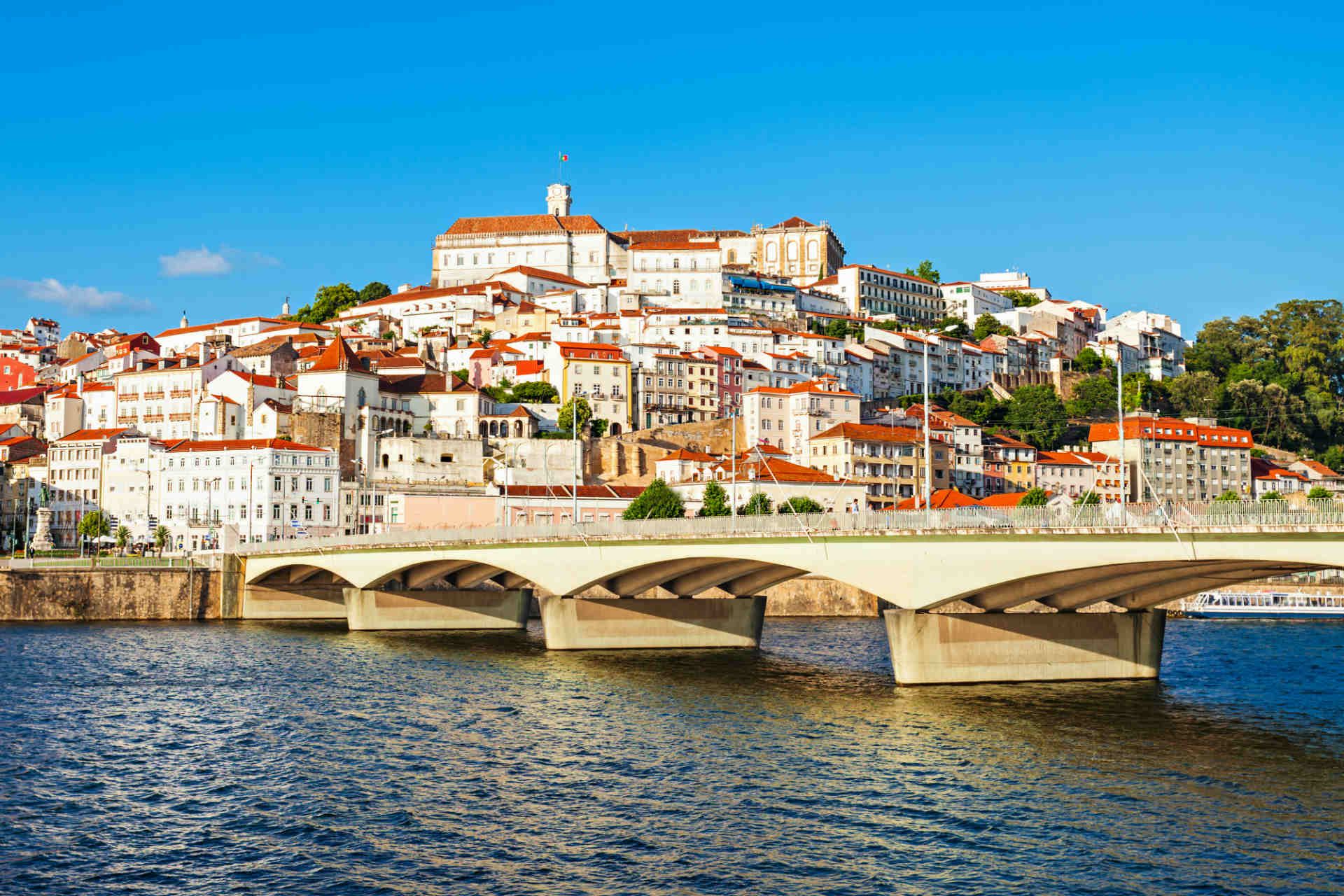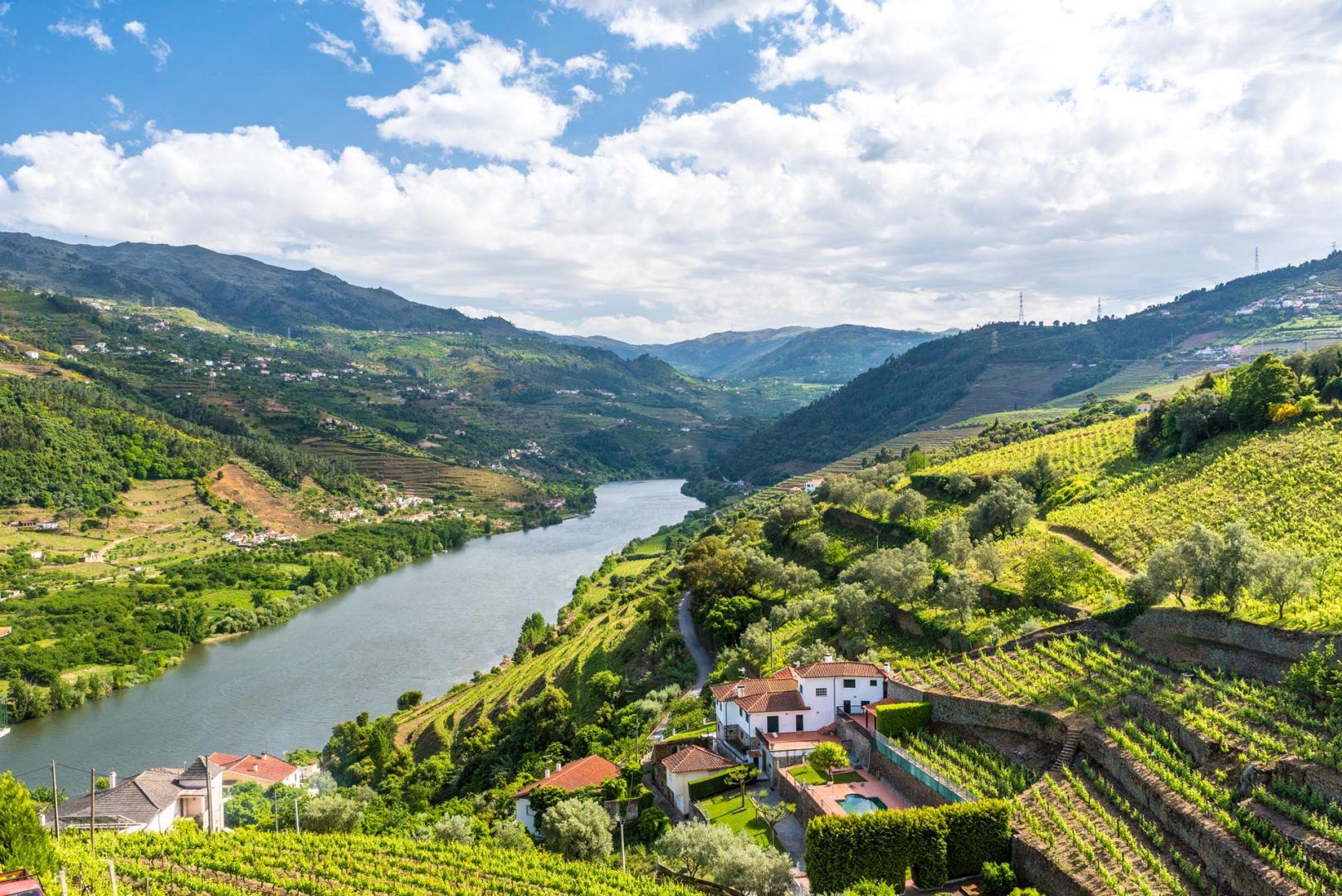Travel advice for Portugal
From travel safety to visa requirements, discover the best tips for visiting Portugal
- Portugal
- Lisbon
- Porto
- Sintra
- Douro Valley
- Coimbra
- Travel Advice
- Travel Tips
Book your individual trip, stress-free with local travel experts
Thinking of visiting Portugal for a week but not sure where to go? Help is at hand in this day-by day-Portugal itinerary for 7 days. Covering culture and cuisine in Lisbon and Coimbra, through to wining and dining in style in the Douro Valley and Porto, it delivers a thoroughly satisfying taste of the country through just having 1 week in Portugal.
If you're planning a trip to Portugal and wondering how to spend a week, this 7-day itinerary covers the highlights. From historic cities to stunning coastlines, it offers a perfect mix of culture, scenery, and food. Here's an overview — followed by a day-by-day breakdown to help you make the most of your
To make the most of your 7 days in Portugal, consider hiring a professional to plan your trip. Our Portugal travel experts will craft an itinerary that's perfect for you.

Lisbon — start point of this Portugal itinerary 7 days © Shutterstock
We touched down in Lisbon, one of Europe’s oldest cities, with a history dating back centuries before London, Paris, and Rome. Spanning seven hills, Lisbon has quite a story – it even survived a massive earthquake in 1755. What you see today is a unique blend of rebuilt 18th-century grandeur and ancient streets that escaped the destruction.
You’ll want to skip the overpriced airport taxis and opt for the metro to the city center instead – it's clean, efficient, and only takes 20 minutes. We decided to grab a Viva Viagem card as soon as we arrived. It’s a convenient pass for all public transport, including Lisbon’s famous yellow Tram 28.
Here are some of our favorite neighborhoods to stay in Lisbon.

Torre de Belém, Lisbon © Shutterstock

Sao Jorge Castle, Alfama, Lisbon © Shutterstock
After experiencing Lisbon in both hot August and mild April, I’d say the ideal time to visit is March to May or September to October. The weather is perfect, and you’ll be able to wander around without a ton of crowds — all the better if you're planning to devote a chunk of your Portugal trip to attractions that draw big crowds.
Our first stop was Pastéis de Belém, the birthplace of Portugal's famous custard tarts. The recipe, created by monks at the Jerónimos Monastery in 1837, remains unchanged and secret - only three people know it today. While you can find pastel de nata throughout Portugal, this is the original and only place you can taste the authentic Pastéis de Belém.
For Belém, take Tram 15E from Praça do Comércio — it runs every 10-15 minutes and takes about 25 minutes to reach the monastery.
For lunch, skip the overly touristy Time Out Market. Instead, head to Zé dos Cornos, a tiny family-run tasca in Mouraria. Try the bacalhau à brás if you can; it’s the best in the city, but they only make a limited amount each day.
Later, we rode the historic Elevator de Santa Justa, and ended our day at my favorite discovery: Park Bar, a hidden rooftop garden atop a parking garage. We lucked out and happened to time our visit at sunset, and it was beautiful.
Editor’s tip: looking for unusual things to do? Discover things to do off the tourist trail in Lisbon.

Street and cobblestone floor in the old neighborhood of Alfama, Lisbon © David Evora Marquez/Shutterstock

Lisbon is a must for any 7 days Portugal itinerary © Shutterstock
Travel time: 40-minute train ride
The journey to Sintra is stunning, especially at sunrise. While there are a few steps along the way, it’s an easy route, and there’s usually a group of tourists heading in the same direction. This was one of the highlights of our 7 days Portugal itinerary.

Quinta da Regaleira: an iconic stop on this 7 days Portugal itinerary © Shutterstock

Pena Palace, Sintra, Portugal © Shutterstock
Travel time: approximately 2-hour train ride
Take a morning train from Lisbon to Coimbra, with departures available from either Lisboa Santa Apolónia or Lisboa Oriente stations.
Coimbra, Portugal's medieval capital (from 1131 to 1255), still has the lively energy of its university, founded in 1290 - making it one of the oldest continuously operating universities in the world, For history lovers, visiting this city is likely to be a highpoint of your 7 days in Portugal.
Start your day at the University of Coimbra, one of Europe’s oldest universities. The highlight is the Biblioteca Joanina, an ornate Baroque library filled with centuries-old books and gilded woodwork.
The library's unique preservation system includes a colony of bats that emerge at night to eat insects that could damage the books.
Another must-see is the Old Cathedral (Sé Velha), one of Portugal's best examples of Romanesque architecture. Built in the 12th century, its fortress-like exterior and intricately carved portals reflect Coimbra’s medieval past.
Here are some favorite neighborhoods to consider for your stay:

Coimbra, Portugal © Shutterstock
Travel time: morning train to Porto (approx. 1 hour).
Porto, Portugal's unvarnished second city, wears its history proudly. The historic Ribeira district tumbles down to the Douro River, where port wine barrels have been transported for centuries. This is a must stop on this 7 days Portugal itinerary.
Metro tickets in Porto work differently from Lisbon, so we opted to buy Andante cards for public transport. Walking is the best way to explore city centers, but trams and funiculars save your legs on Porto's hills (and at this point, we could use the break).
We spent our first afternoon getting lost in Ribeira's maze of staircases. The Escadas do Codeçal gave us our favorite views of the trip. Along the way, we found Mercearia das Flores, a cozy grocery store turned wine bar, where we stopped for a break.
We made sure to time our walk across the double-decker Dom Luís I Bridge for sunset – definitely use the upper deck for the best photos.
Here's a quick overlook of our favorite neighborhoods in Porto - for a more in-depth look, see our full guide.

Porto, Portugal — a 7 day itinerary Portugal highlight © Shutterstock

Porto, Portugal, a great stop on this 7 days Portugal itinerary © Shutterstock
Travel time: approx. 2 hours and 15 minutes by train from Porto to Pinhão
The Douro Valley, Portugal’s top wine region, is stunningly scenic and divided into three sections: Baixo Corgo (lower), Alto Corgo (upper), and Douro Superior (eastern). Pinhão, located in the scenic Alto Corgo area, is a charming gateway into port wine country and one of the prettiest villages we have ever visited. Even the train station here is a sight to see, decorated with beautiful azulejo tiles showing scenes of the grape harvest.
You can explore the Douro Valley in a few ways: by riding the historic Linha do Douro railway from Porto to Pocinho, driving along the scenic N222 road, or taking a peaceful boat cruise on the Douro River. This region is the world’s only major wine region where all harvesting is done by hand due to the steep, terraced hills, which have been carved out of schist rock over generations.
For panoramic views, head to the Miradouro de São Leonardo de Galafura. This viewpoint shows off the landscapes that earned the Douro its UNESCO status. To reach it, you can hire a taxi from Pinhão (around €30 round trip) or join a wine tour that includes it.
Other highlights include Lake Tua, which reflects the surrounding mountains. We stopped at Provesende, a traditional village where centuries-old customs like communal bread baking are still practiced today.

Douro Valley, Portugal © Shutterstock
We dedicated the last day of our 1 week in Portugal to exploring more of Porto and honestly, we could have stayed even longer!
If you're considering an extended visit, grab the Porto Card with transport if you're staying for 3+ days—it includes unlimited public transport and free entry to several museums.
Start early at Clérigos Tower on the last day of your Portugal trip. We tackled its 225 steps before 10 a.m. to beat the lines.
This 76-meter baroque bell tower has been a landmark for ships coming into the Douro since the 18th century, and the morning light made the climb worth every step.
From there, we went to Bolsa Palace nearby. The highlight was the Arab Room, with its breathtaking 18kg of gold leaf decor. We booked the first English tour of the day in advance since these tours often sell out.
For our grand finale of this 7 days Portugal itinerary, we traveled across the river in Vila Nova de Gaia at Graham's Port Lodge. Their vintage room houses ports dating back to 1868, aging in massive oak barrels just as they have since British merchants established their warehouses here in the 18th century.
We splurged on a tasting, and it was definitely worth it for rounding off our one week in Portugal in memorable style.
Deciding between Porto and Lisbon? See our full guide.

Traditional historic facade with azulejos in Porto, Portugal © leonori/Shutterstock
From travel safety to visa requirements, discover the best tips for visiting Portugal
Discover Portugal's most captivating stories
written by
Dre Roelandt
updated 16.12.2024
Dre Roelandt is originally from the United States but lives and works in Berlin, Germany. Dre is a freelance writer and artist with a passion for travelling. They are an in-house Senior Content Editor at Rough Guides.
Arrange your trip, hassle-free, with local travel experts
Arrange your trip with local travel experts